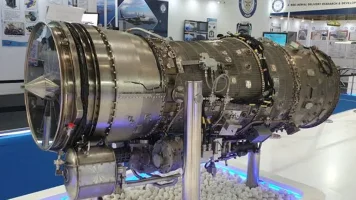- Views: 2K
- Replies: 9

The Indian Army's ambitious Future Ready Combat Vehicle (FRCV) program is set to revolutionize its armored fleet by incorporating cutting-edge technology and, importantly, indigenous propulsion systems.
At the heart of this initiative is the DRDO-developed Datran 1500hp engine, designed to power the next generation of Indian main battle tanks (MBTs). This engine represents a significant stride towards India's goal of self-reliance in defence technology.
The Datran 1500hp engine is a military-grade propulsion system specifically engineered to provide the FRCV MBTs with exceptional power and performance.
With a 30.1 power-to-weight ratio for a 50-ton MBT, the engine ensures enhanced mobility and operational efficiency, crucial for modern combat scenarios. Its indigenous design aligns with the Indian Army's focus on reducing dependence on foreign technologies.
Interestingly, the FRCV program will involve the development of two distinct prototypes based on responses to the upcoming Request for Proposal (RFP). These prototypes will embody different design philosophies, armament configurations, and technological innovations.
However, both will be powered by the same Datran 1500hp engine. This standardization ensures consistent performance metrics and simplifies logistics during production and deployment.
After rigorous trials and evaluations, one of the two prototypes will be selected as the winning design. The production plan for the first batch of over 590 tanks will involve a 60-40 manufacturing split between the two companies responsible for the competing prototypes.
Production will occur in three phases, with each batch incorporating incremental upgrades based on operational feedback and emerging technological advancements.
The FRCV tanks are slated to replace the Indian Army's aging T-72 fleet by the mid-2040s. With over 2,000 T-72 tanks currently in service, the FRCV program represents a crucial step in modernizing India's armored capabilities and ensuring its readiness for future conflicts.





